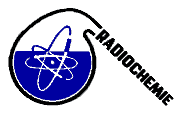Speaker
Dr
Andrej Osterc
(Institute Jožef Stefan)
Description
I-129 is considered as a global pollutant and its role as a global tracer to follow the dissemination of radionuclides from a source point such as nuclear fuel reprocessing plants increases. The natural I-129/I-127 isotopic ratio in the order of 10E-12 was significantly influenced by releases of anthropogenic I-129 to the environment. The ratio of I-129/I-127 in the marine environment has increased to 10E-11 – 10E-10, and in the terrestrial environment to 10E-9 – 10E-7, even 10E-6 in the vicinity of nuclear fuel reprocessing plants. Anthropogenic I-129 predominates in the biosphere, soil and in upper layers of the oceans, therefore it can be expected that the isotopic ratio I-129/I-127 is increasing in these compartments of the ecosystem.
At the Josef Stefan Institute we have developed a radiochemical neutron activation analysis method (RNAA) for the determination of I-129 in environmental samples and the detection limit of the method is 5∙10E-14 g I-129 / g solid sample. The developed method was used to trace I-129 in the environment of Slovenia. From marine environment seawater, alga, thorny oyster and sediment samples were analyzed and from terrestrial environment precipitation, soil and pine needles. The results found were in the range from 7.2 to 120.8 • 10E-7 Bq/kg for precipitation, up to 75 • 10E-4 Bq/kg for soil, from 0.1 to 2.12 • 10E-4 Bq/kg for seawater, from 7 to 62 • 10E-4 Bq/kg for thorny oyster and from 17 to 73 • 10E-4 Bq/kg for brown alga Fucus virsoides (Donati) J. Agardh., which is endemic to the Adriatic Sea. The content of I-129 in marine sediment and pine needles samples analyzed till now was below the detection limit of the method.
The data of this study represent a survey of I-129 in the environment of Slovenia. The most likely source of I-129 are nuclear fuel reprocessing plants in La Hague and Sellafield, which are known to be the major sources of I-129 in the environment of North Europe. I-129 is transferred to the atmosphere and washed out to the marine and terrestrial environment of Slovenia by precipitation, so it is of atmospheric-precipitation origin.
Primary author
Dr
Andrej Osterc
(Institute Jožef Stefan)
Co-author
Prof.
Vekoslava Stibilj
(Institute Jožef Stefan)

